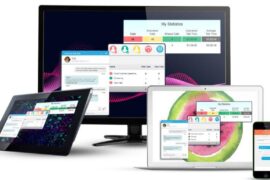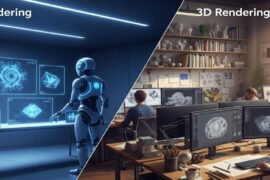Key Takeaways:
- How construction software contributes to sustainable building practices.
- The role of digital tools in reducing waste and resource consumption.
- Understanding the integration of eco-friendly strategies into home building.
- Future trends in sustainable construction technology.
Introduction to Sustainable Home Building
With the growing awareness of environmental issues, sustainable construction has moved from a niche practice to a mainstream necessity. Green building aims to reduce the ecological footprint of new construction, focusing on energy efficiency, resource conservation, and overall sustainability. Leveraging technology, especially home builder construction software, can significantly enhance the efficiency and effectiveness of green building practices.
How Home Builder Construction Software Enhances Sustainable Practices
One of the most significant ways new home builder construction software promotes sustainability is through optimized project management and execution. By integrating various stages of the construction process into one cohesive platform, these software solutions can help monitor and manage resource usage more effectively. This unified approach minimizes waste, ensures accurate material estimations, and streamlines workflows, all of which are pivotal to sustainable building. For instance, New Home builder construction software facilitates real-time energy consumption and environmental impact tracking, allowing builders to make informed decisions prioritizing sustainability. Furthermore, by providing data analytics capabilities, these tools enable continuous improvement in sustainable practices by identifying optimization and efficiency enhancement areas.
Reducing Waste and Improving Resource Efficiency
Traditional construction methods often result in significant material waste and inefficiencies. Construction software aids in creating accurate blueprints and material lists, reducing the likelihood of over-ordering or misusing construction materials. Furthermore, the efficient scheduling provided by these tools ensures that all resources are utilized optimally, reducing idle time and lowering the carbon footprint associated with material production and transportation. This efficiency leads to significant cost savings and a more environmentally friendly construction process.
Incorporating Eco-Friendly Strategies
Green building is not just about using eco-friendly materials; it’s also about more thoughtful planning and implementation. Construction software assists builders in integrating various sustainable strategies into their projects. For example, it can help design homes to fully take advantage of natural ventilation and light, lowering the need for artificial lighting and climate control systems. Additionally, these tools can facilitate the implementation of energy-efficient systems like solar panels and rainwater harvesting setups, ensuring that new homes are green from the start and remain sustainable throughout their lifecycles.
Real-Time Monitoring and Adjustments
Modern homebuilder construction software provides a substantial benefit of monitoring projects in real-time. Builders can track resource usage, energy consumption, and emissions during construction, making necessary adjustments to improve sustainability. This real-time data enables quick identification and resolution of inefficiencies, ensuring that the project adheres to environmental standards and sustainability goals from beginning to end.
Promoting Compliance with Environmental Standards
Globally, environmental standards and regulations are getting stricter. Construction software helps builders stay compliant with these ever-evolving regulations. By automatically updating to incorporate the latest standards and guidelines, these digital tools ensure that every project is held to the highest environmental performance benchmarks. This compliance is critical for sustainability and protects builders from potential legal and financial repercussions.
Enhancing Collaboration and Communication
Any construction project, especially one with sustainability objectives, must have effective communication and teamwork to succeed. Construction software makes it possible to create platforms for improved coordination between architects, engineers, contractors, and suppliers. Enhanced collaboration ensures everyone’s efforts are aligned toward the common goal of building sustainably. Efficient communication channels also facilitate sharing of green building practices and innovations, fostering a culture of sustainability within the construction industry.
Final Thoughts
The journey toward sustainability in home building is an ongoing process that requires the right tools and strategies. Homebuilder construction software stands at the forefront of this movement, offering solutions that streamline processes, reduce waste, and promote eco-friendly practices. By embracing these digital tools, builders can improve their efficiency and profitability and contribute to a more sustainable future for the construction industry and beyond. As more builders adopt these technologies, the vision of a greener, more sustainable world becomes increasingly achievable.































